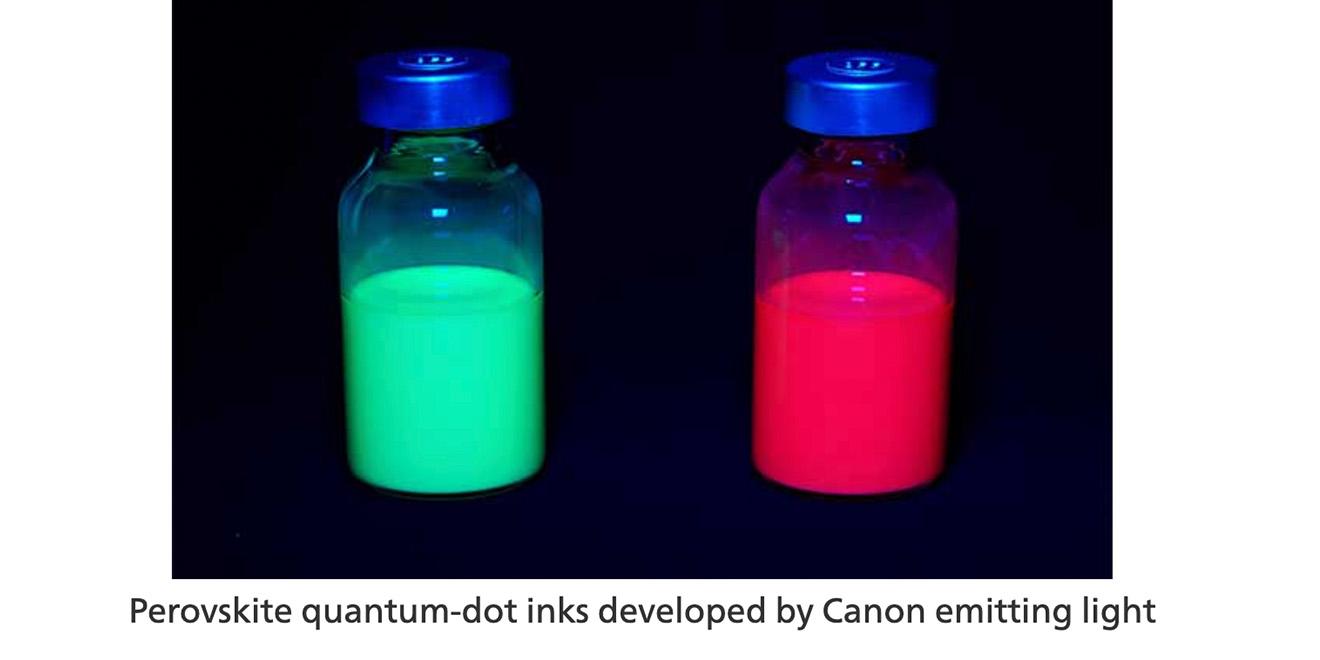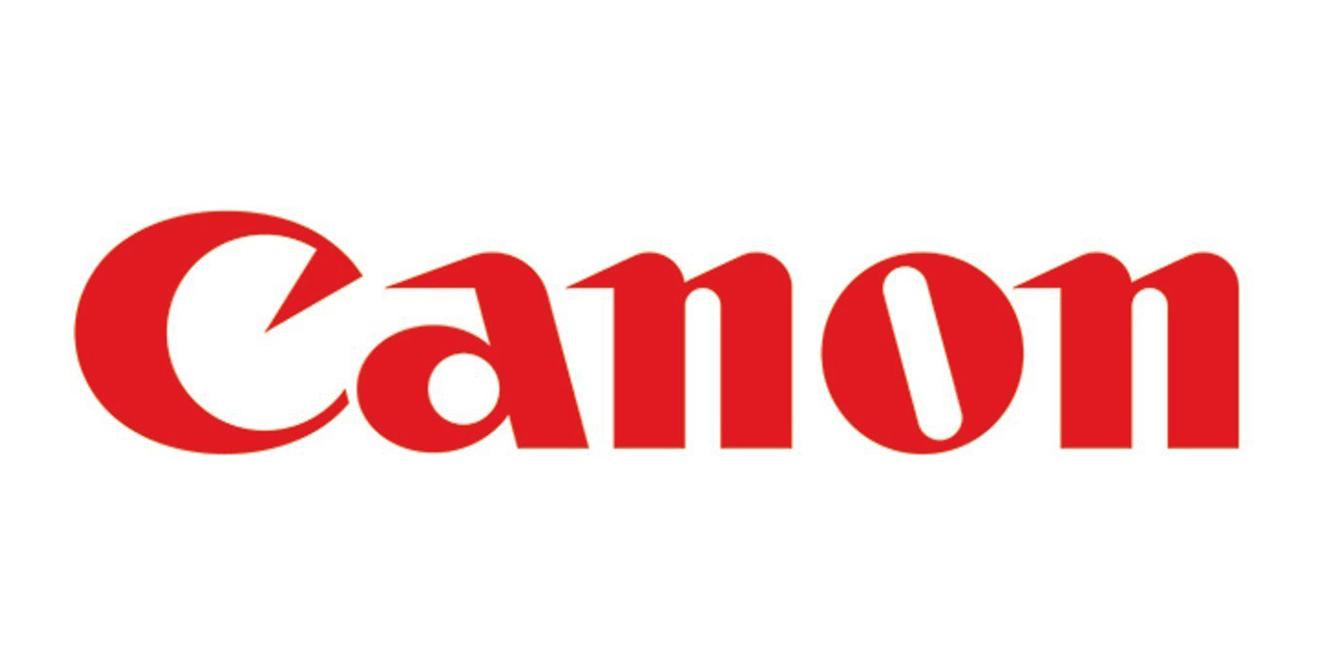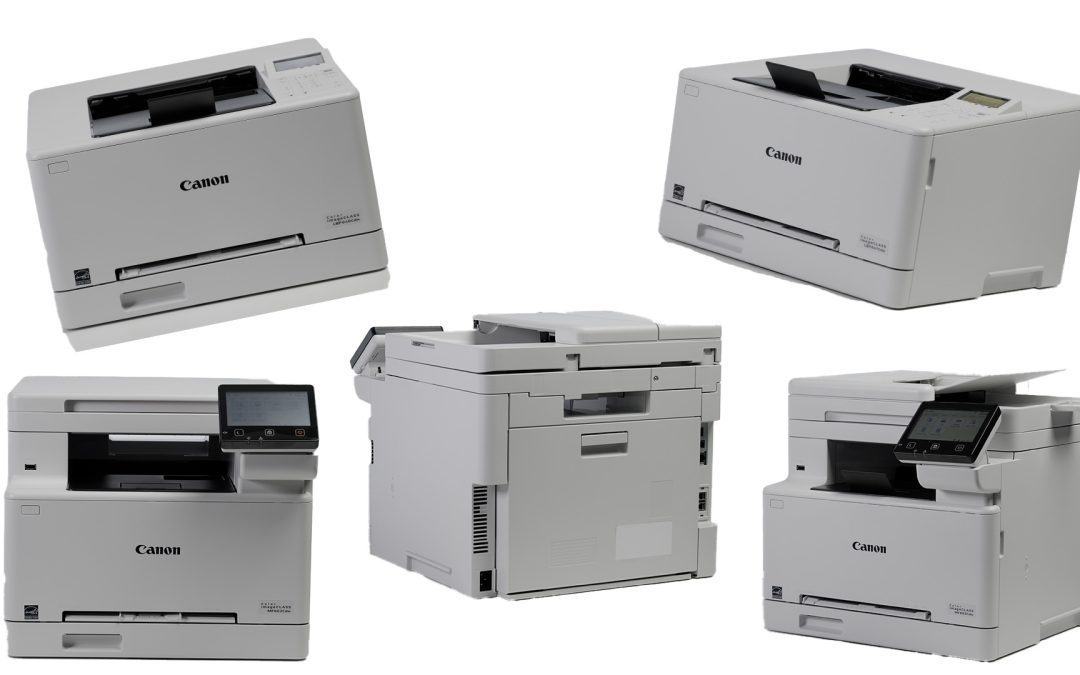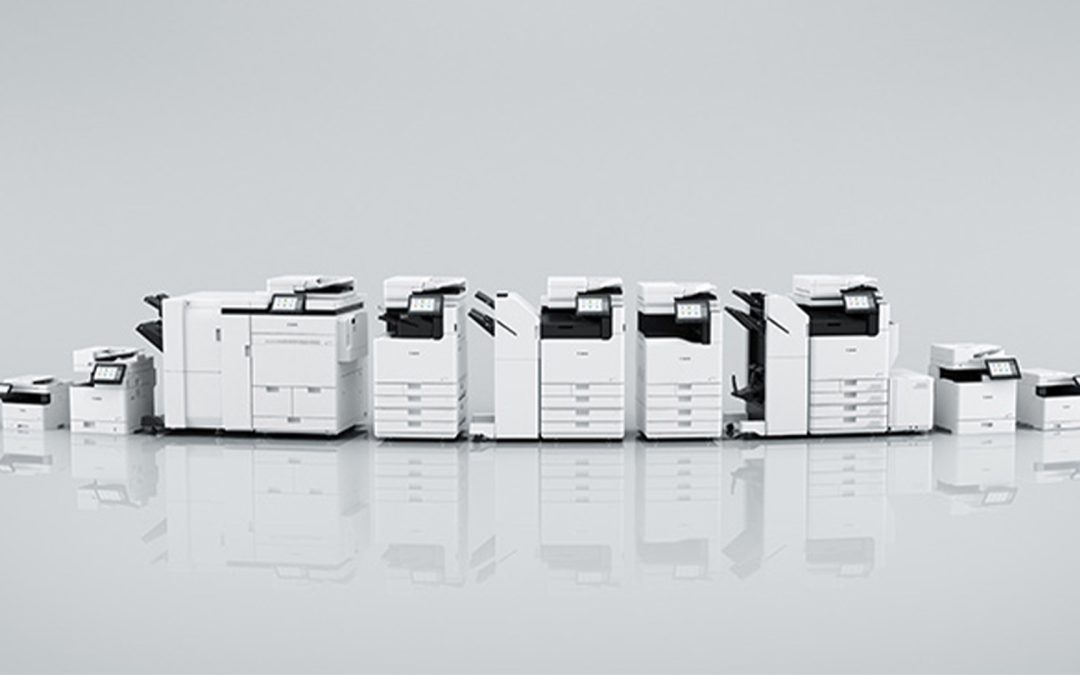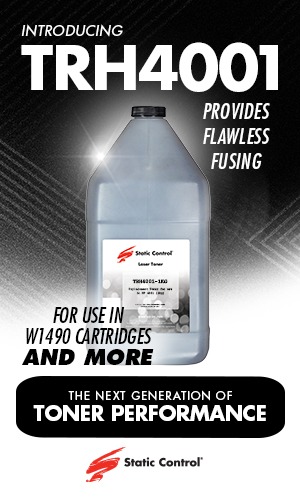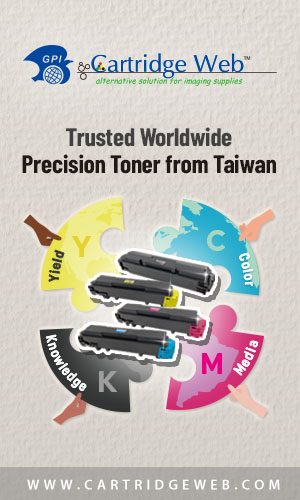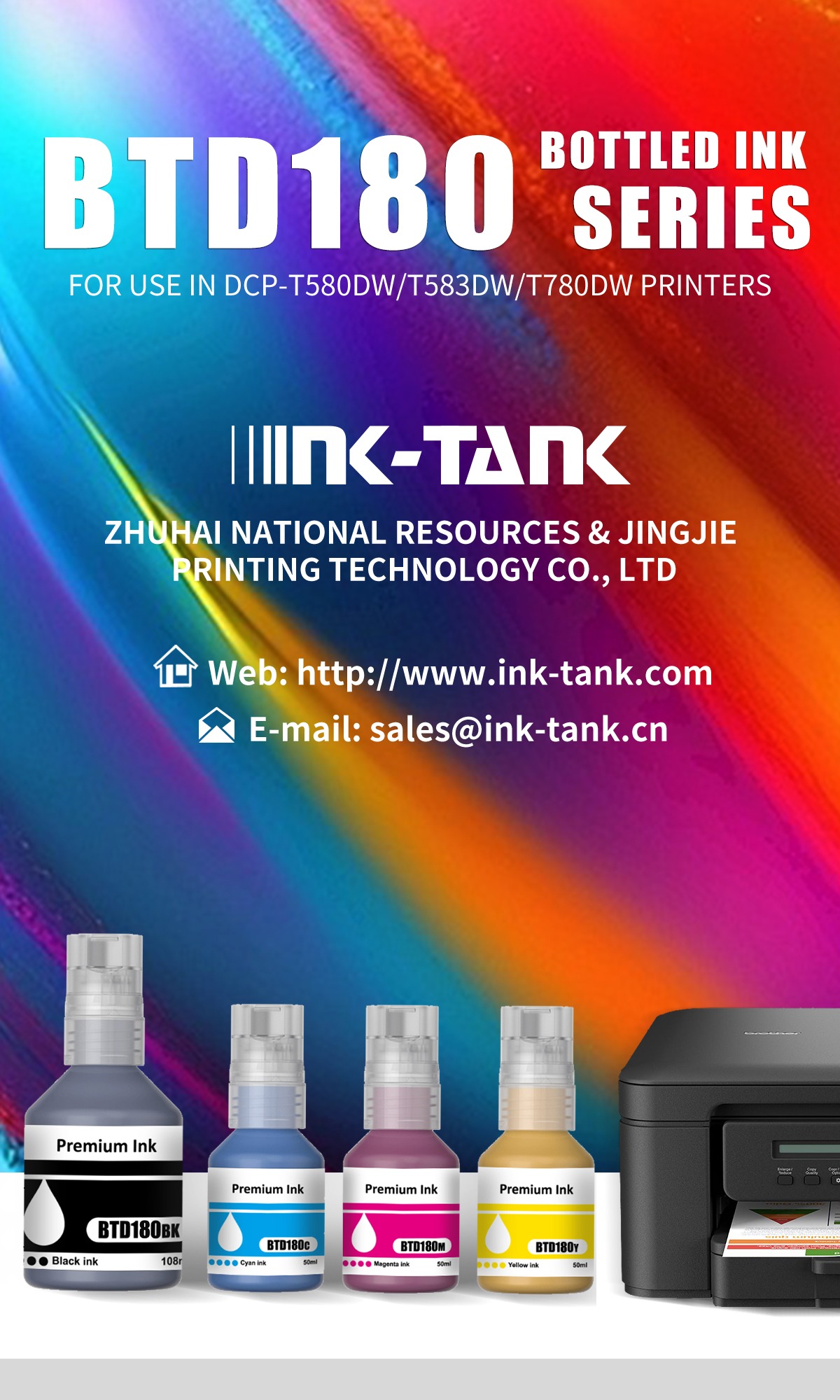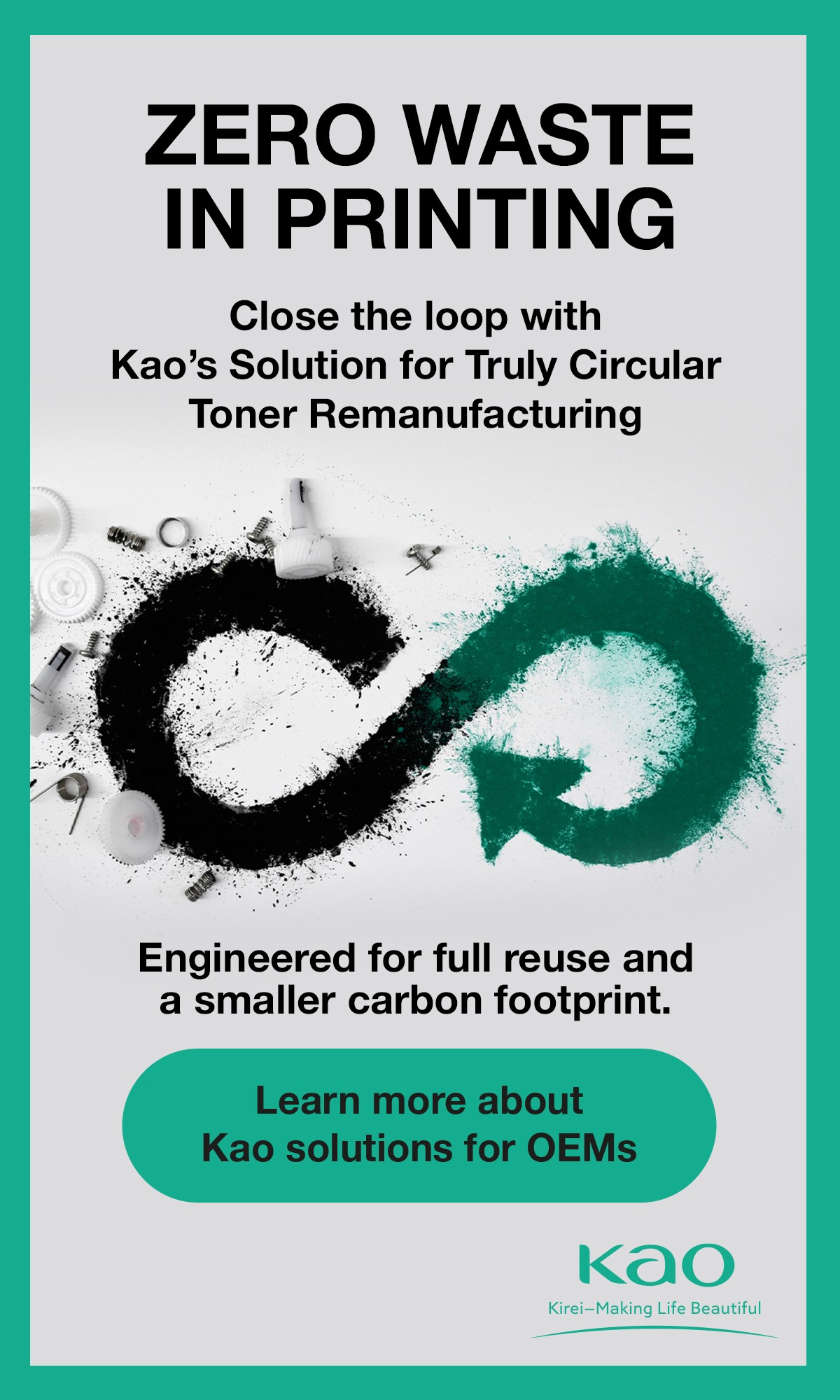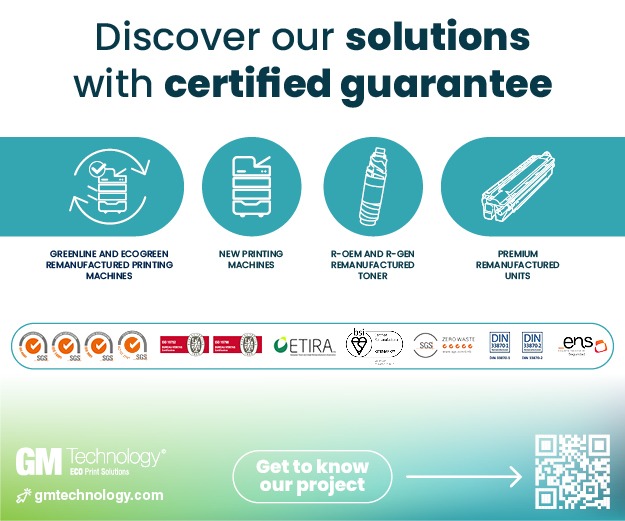Canon Inc. announced that the company has developed a quantum-dot ink with a perovskite structure (perovskite quantum-dot ink) as a material for next-generation quantum-dot displays and has successfully demonstrated its practical durability for the first time in the world.
The performance and image quality of display devices continue to rapidly improve, and towards this end, one such approach that is gaining momentum is applying quantum-dot technologies (QD) to meet the need for displays with higher image quality.
Quantum dots are semiconductor nanocrystals that measure only a few nanometers in diameter and can emit light with high brightness and high colour purity. Displays with quantum-dot technology are attracting growing attention due to their wide colour gamut that makes possible high visual expressiveness. Therefore, quantum dots for display is sought to achieve higher colour purity and higher light utilization efficiency. In addition, though cadmium (Cd) has thus far been the preferred material for quantum dots, due to environmental concerns, there is a growing interest in Cd-free materials.
With these requirements in mind, Canon said it focused on the development of perovskite quantum-dot inks. Perovskite quantum dots are considered an effective Cd-free approach other than InP (indium phosphide) quantum dots. In terms of colour purity and light efficiency, many see perovskite quantum-dots as a promising material capable of contributing to high brightness, a wide colour gamut and high resolution. However, poor durability has thus far been a barrier to practical use.
To address the issue of durability, Canon is leveraging its proprietary technologies nurtured through development of ink and toner for printers. The company has established a unique method to form a protective shell on quantum dots, thereby achieving practically durable perovskite-dot ink with retained colour purity and light usage efficiency.
InP quantum-dot ink covers 88% of the colour gamut based on the ITU-R BT. 2020 recommendation3, while Canon’s perovskite quantum-dot inks can cover 94%4 of the gamut. In addition, the high efficiency of light use is expected to reduce power consumption of quantum dots by approximately 20%5 compared to conventional technology.
Canon’s quantum-dot inks have the potential to help realize next-generation OLED displays with ultra-high definition, such as quantum-dot 8K displays, a technology that thus far has been unachievable.

